This painting depicts a courtesan, that is, a high-end citizen-class prostitute. Lower on the social ladder were brothel prostitutes, whores, and meretrici and higher were concubines.
Source: Gli abiti de veneziani di quasi ogni età con diligenza raccolti e dipinti nel secolo XVIII, by Giovanni Grevembroch (1731–1807), which in four volumes contains over six hundred watercolours of how Venetians dressed in the 1700s.
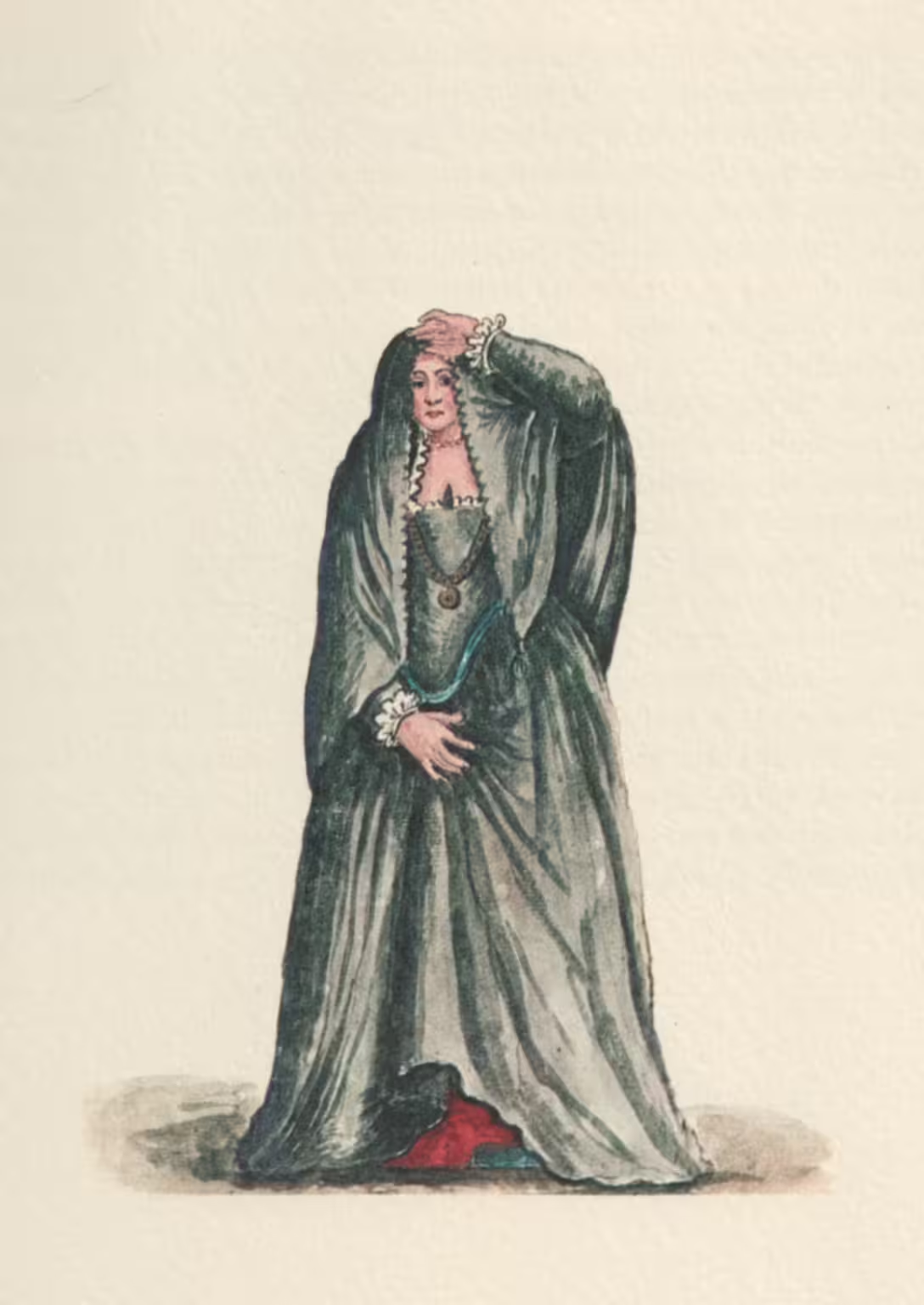
Courtesans
The Courtesans, who wanted to gain credit, by means of feigned honesty, used the Dress of Widows, Married Women, and Maidens. They had to always stay inside, and covered with a Cloak, so that not being able to be seen, they were forced to reveal themselves somewhat, and therefore it was impossible that They were not recognized by some gesture. Moreover, since they were forbidden to wear pearls, they were even more pointed out as such when they displayed their necks unbejewelled. They wore Brocade Skirts of different colours, and embroidered, at great expense, and those of more respect wore Roman style sandals inside their Slippers.
The Venuses tall without decorum
Are followed by swift feet,
And the false beauties of the Taidis
Waste away the years, and despise the gold.
SONNET
That the blow be empty, and you tremble at the thunder,
It is a decree of Heaven to terrify you,
It is so that you may repent of your errors
Leave your life as a gift to your wicked soul;
But if it is more, that you abandon
The way, that He wants to open for you to save you,
You will perish from the World among the Syrtes,
Nor will you have it later if you do not want forgiveness now.
No, no, do not delay any longer, now let it be enough for you,
For the burden of your great faults is heavy enough.
You have made us err too much, and you have erred too much.
Let your breast be washed of black stains, filthy:
And if Thais has already loved her, let her be saddened by it,
Make the Egyptian see the World again for you.
To Madame Dori Patella, who without much disturbance appeared on the Scene of the Mondo entirely different from herself, we made this speech not without reasonable mystery,

Original Italian text
Cortigiane
Le Cortigiane, che volevano acquistar credito, col mezzo della finta onestà, si servivano dell’Abito delle Vedove, delle Maritate, e delle Donzelle. Dovevano star sempre serrate, e coperte con la Cappa, di maniera che non potendo esser vedute, erano sforzate scoprirsi alquanto, e perciò impossibile, che Elle non venissero conosciute a qualche gesto. Essendo inoltre proibite loro le perle, erano maggiormente additate per tali, quando mostravano il Collo dissabbegliato. Portavano Sottane di Broccatello di diversi colori, e ricamate, con molta spesa; e quelle di più riguardo affettavano Scarpe alla Romana dentro alle Pianelle.
Le Veneri tallor senza decoro
Sono da piede rapido seguite,
E delle Taidi le beltà mentite
Dissipan gl’anni, e villipendon l’oro.SONETTO
Che vada vuoto il colpo, e tremi al tuono,
È decreto del Ciel per atterrirti,
È perche degl’error abbi a pentirti
All’alma rea lascia la vita in dono;Ma se più fia, che lasci in abbandono
La via, che di salvarti Ei vuole aprirti,
Si perirai del Mondo fra le Sirti,
Ne più l’avrai s’ora non vuoi il perdono.Nò nò, più non si tardi, ormai ti basti,
Che assai de tuoi gran falli è grave il pondo.
Troppo facesti errar, e troppo errasti.Si lavi il seno d’atre macchie immondo:
E se già Taide l’amirò ne fasti,
Fa, ch’Egiziaca or ti rivegga il Mondo.
A Madama Dori Patella, che senza gran sturbo comparve nella Scena del Mondo tutta differente a se stessa facessimo questo discorso non senza ragionevole mistero.
Grevembroch (1981), vol. 4, p. 157.
Related articles
Bibliography
- Grevembroch, Giovanni. Gli abiti de veneziani di quasi ogni eta con diligenza raccolti e dipinti nel secolo XVIII, orig. c. 1754. Venezia, Filippi Editore, 1981. [more]

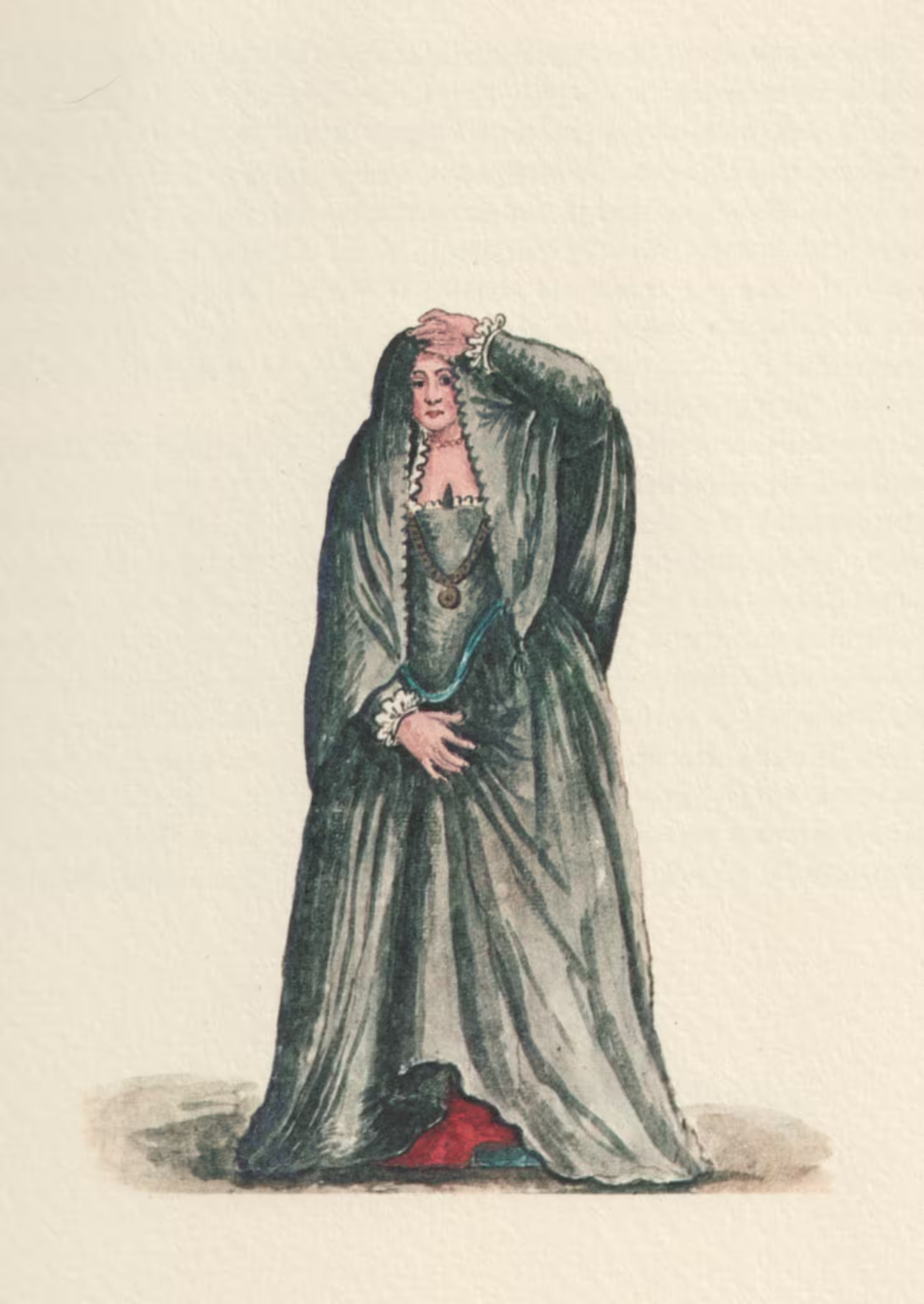
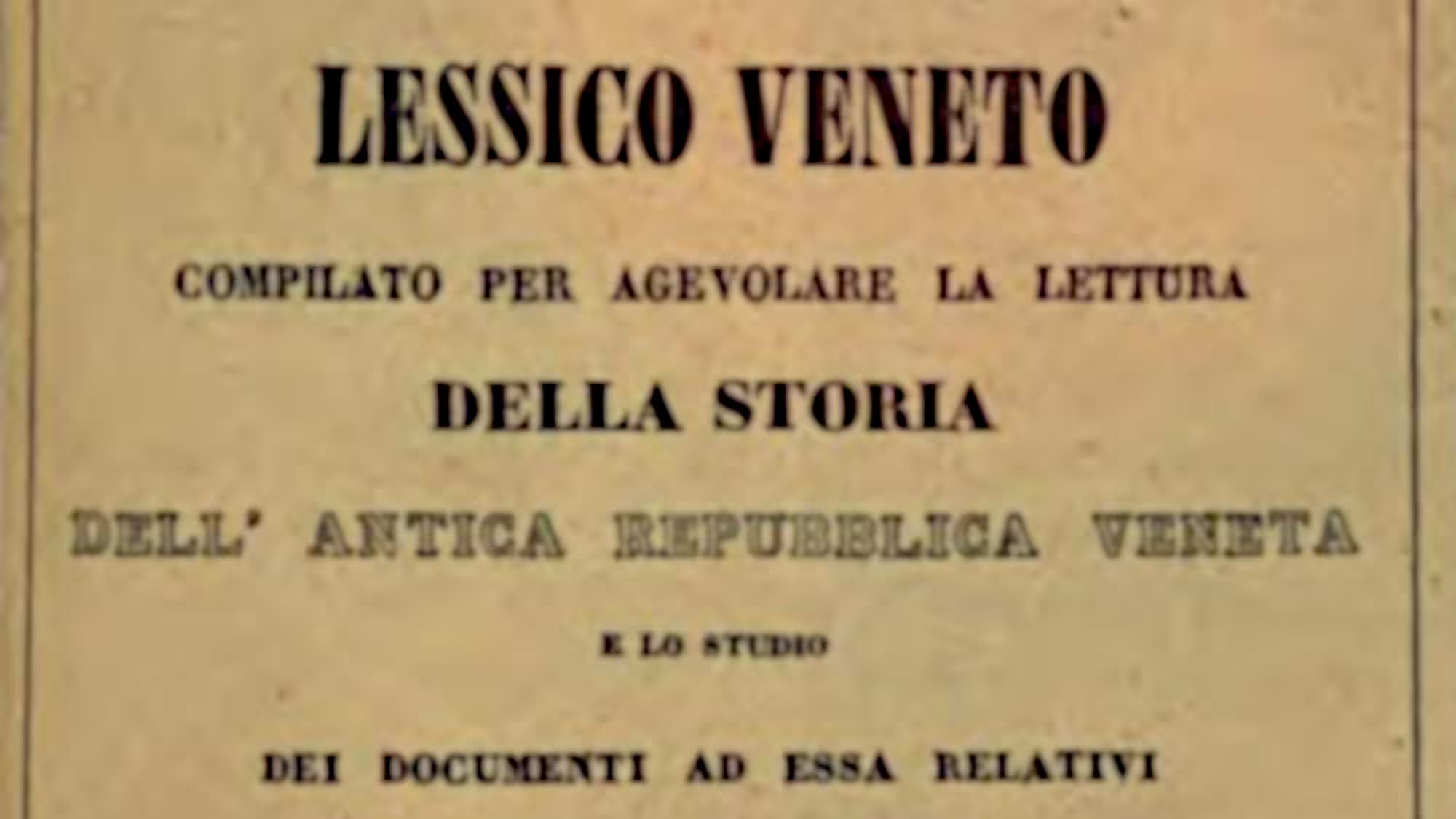
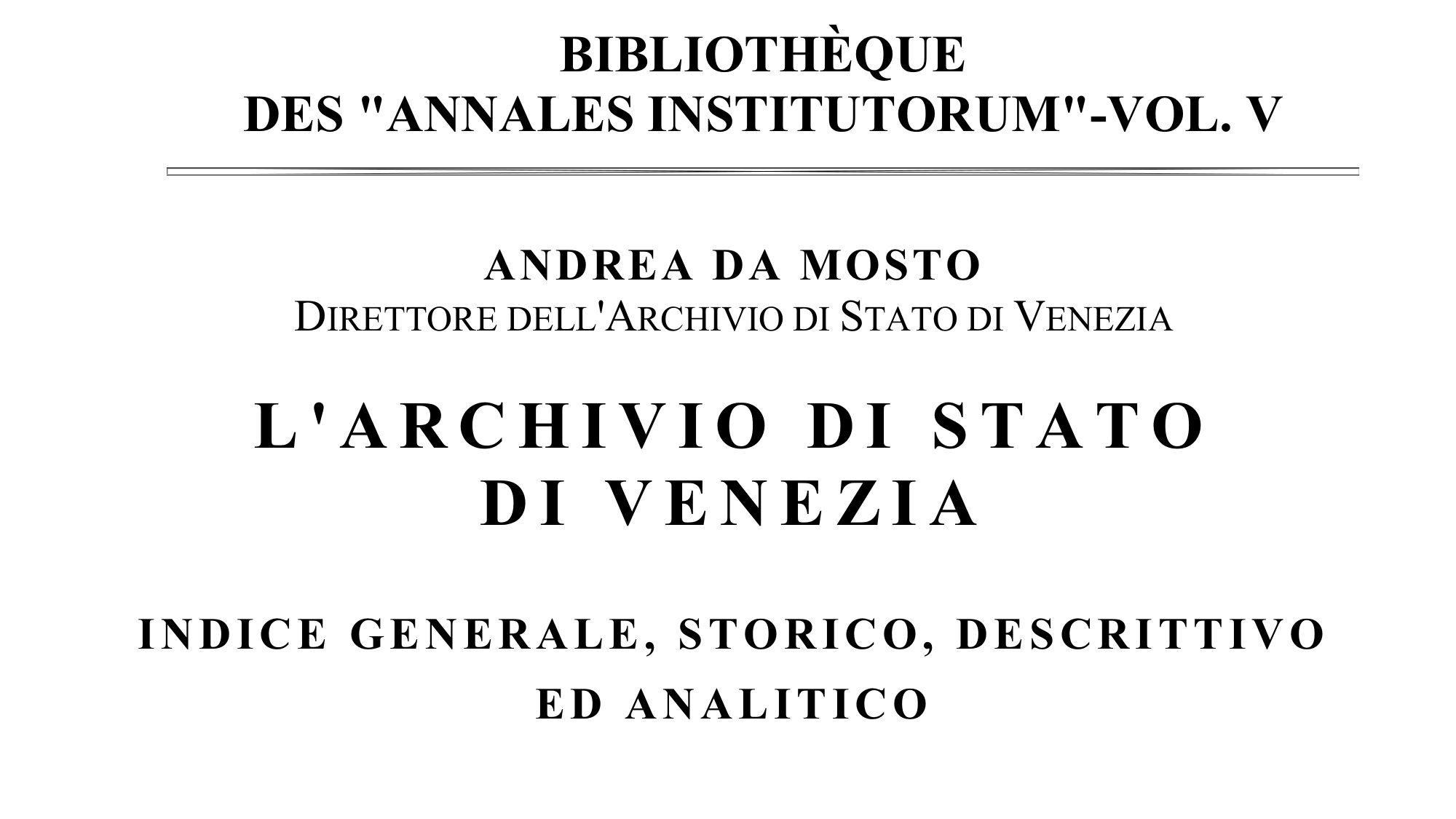
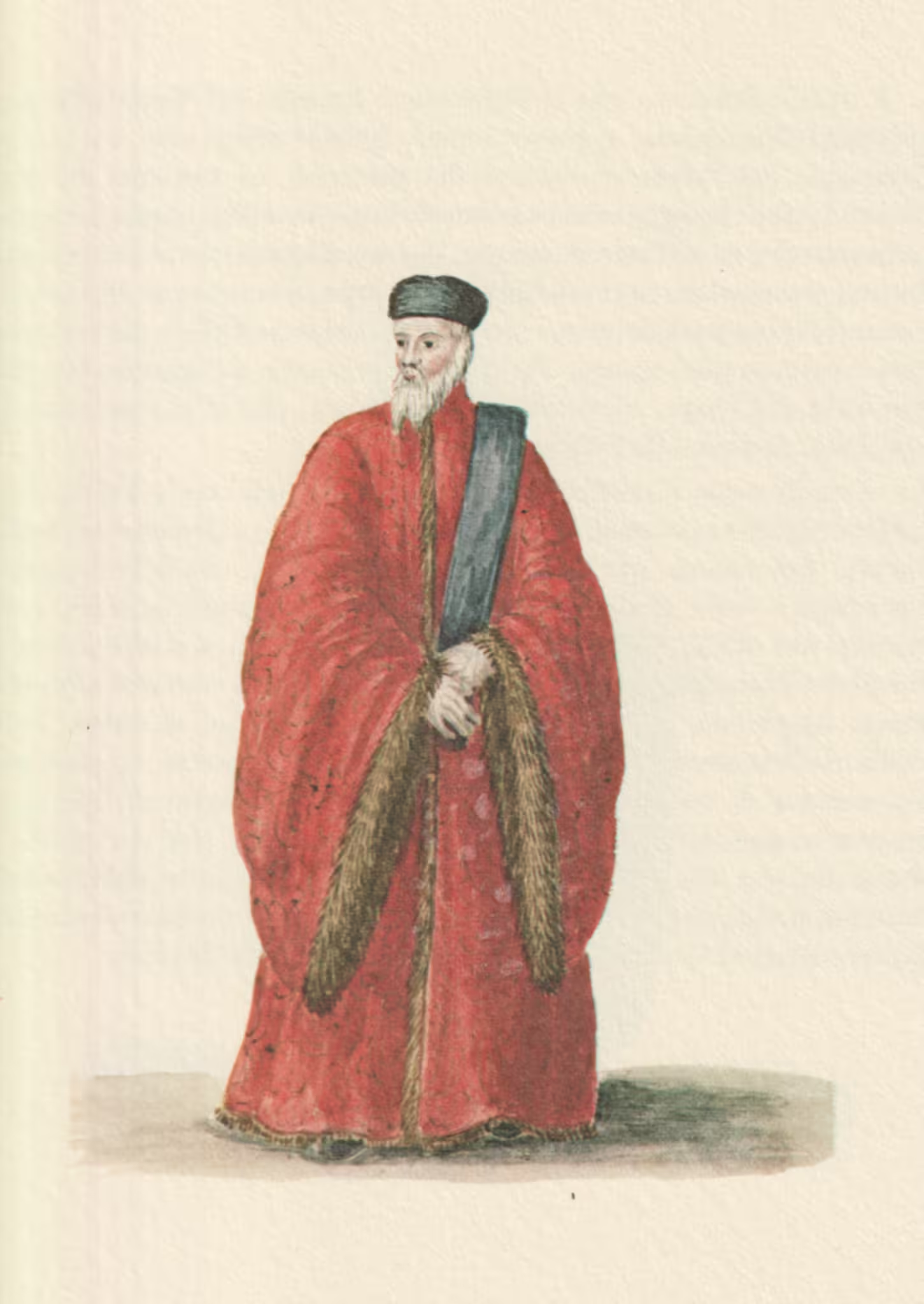
Leave a Reply